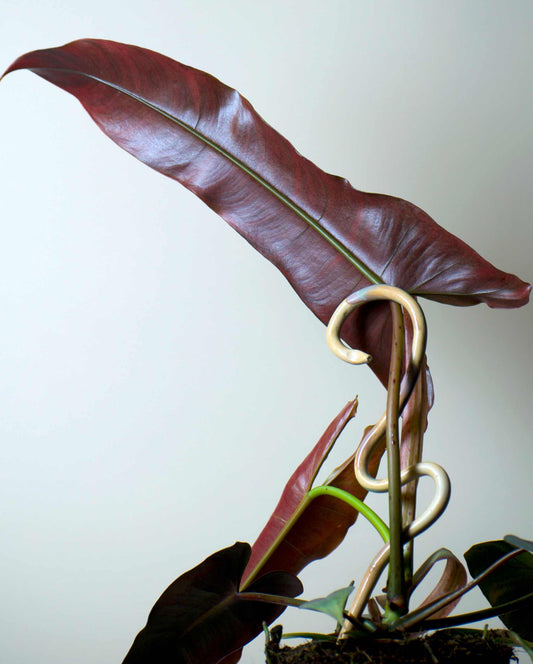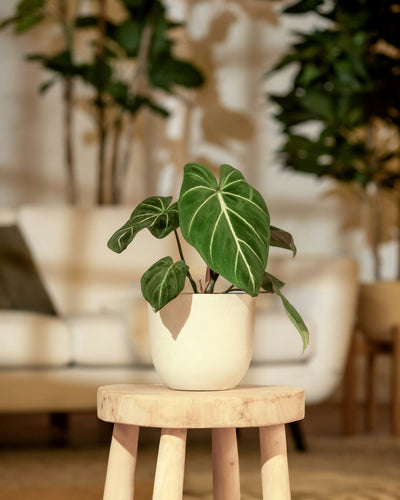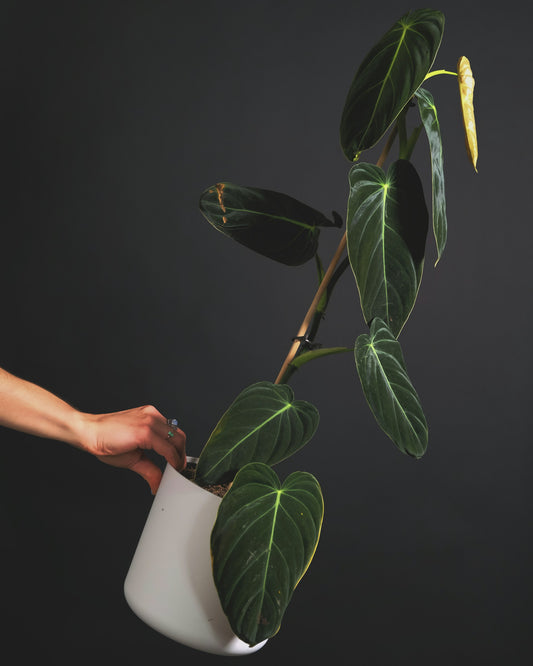Share
How to care for Philodendron Melanochrysum?
In its natural environment this tropical plant climbs trees and you can mimic this by giving the plant a moss stake which produces larger leaves . Its large foliage, when fully developed, can be compared in size and splendor to Anthurium veitchii and Anthurium warocqueanum .

Philodendron melanochrysum observed by Janet Ponsteen on 28 Jul 2024 at a botanical garden in Germany
Origin
Philodendron melanochrysum comes from Colombia and grows at the foot of the Andes mountain range at heights around 500 m above sea level.

Philodendron melanochrysum is also easy to care for and works, just like other plants in the philodendron genus, as an air purifying houseplant. Read on to learn all about caring for this unusual climbing plant!
Light
Philodendron melanochrysum thrives best in bright, indirect light conditions that mimic the subdued light of the rainforest. Avoid direct sunlight, as it can burn the large green leaves. An east or west window is an excellent choice for this climbing plant.
Soil
To get big green leaves on your Philodendron, choose a well-drained soil for Philodendron species with a lot of coco soil and perlite. You can also use a mixture of potting soil, perlite and orchid bark to create a good soil. Alternatively, you can buy soil online that is specifically formulated for our tropical plants.
Plant support
In order for the green leaves to reach their full potential , a plant support is needed for Philodendron melanochrysum to grow on. The aerial roots attach to either the moss pile or the gap and anchor the plant. When Philodendrons climb, they need to feel secure in order to produce large leaves . A very common mistake when it comes to growing climbing plants for their large leaves is not giving them proper plant support!

Buy a plant support for Philodendron that imitates tree bark here ! Photo by bas kortleve May 1, 2024
Watering
Green plants such as Philodendron melanochrysum prefer the soil to be kept slightly moist, but not wet. Water when the top 2-3 cm of soil feels dry. By following this advice, you reduce the risk of root rot, which is a common problem with tropical plants. Use clear plastic pots to keep track of soil moisture and root health without having to guess!
Temperature and humidity
This tropical beauty thrives best in temperatures between 18–26 °C and with a relatively high humidity around 50% . If possible, place the plant near a humidifier or spray the leaves regularly to create a moist environment. This little extra will help the plant thrive.

One of our moss piles becomes like an extension of the pot and helps the plant get big leaves quickly!
Pruning and cuttings
Philodendron melanochrysum grows quickly and can be pruned if it gets too big. Pruning is also a good opportunity to take cuttings and propagate your Philodendron . Follow these steps:
- Take a cutting : Cut a stem with at least two nodes from the top.
- Remove the bottom leaves : Leave 1-2 leaves on top.
- Rooting in water : Place the cutting in water and make sure the nodes are submerged.
- Plant in soil : When the roots are about 2.5 cm long, you can plant the cutting in well-drained philodendron soil.
- Keep moist : Keep the soil slightly moist for the first few weeks.

A cutting of Philodendron that is cut two nodes from the top.
Transplantation
If your philodendron is getting too big for its pot, it's time to repot. This should be done about once every two years , preferably in the spring or summer. Choose a planting pot that is one size larger and fill with fresh soil for tropical plants.
Common problems and solutions
Yellow leaves : This is often caused by overwatering. Allow the soil to dry up between waterings and remove the yellow leaves.
Brown leaves : Usually a sign of too little moisture or too much direct sunlight. Increase the humidity or move the plant to a less sunny location.
Long and sparse growth : Indicates lack of light. Move the plant to a place with more light.
By following these simple tips, your new climbing plant can become a large Philodendron and a beautiful green houseplant at home. Read more in our related articles for more tips on philodendron care and other tropical plants here !











